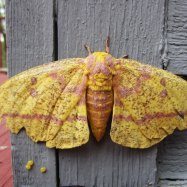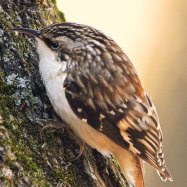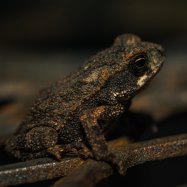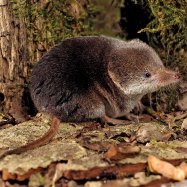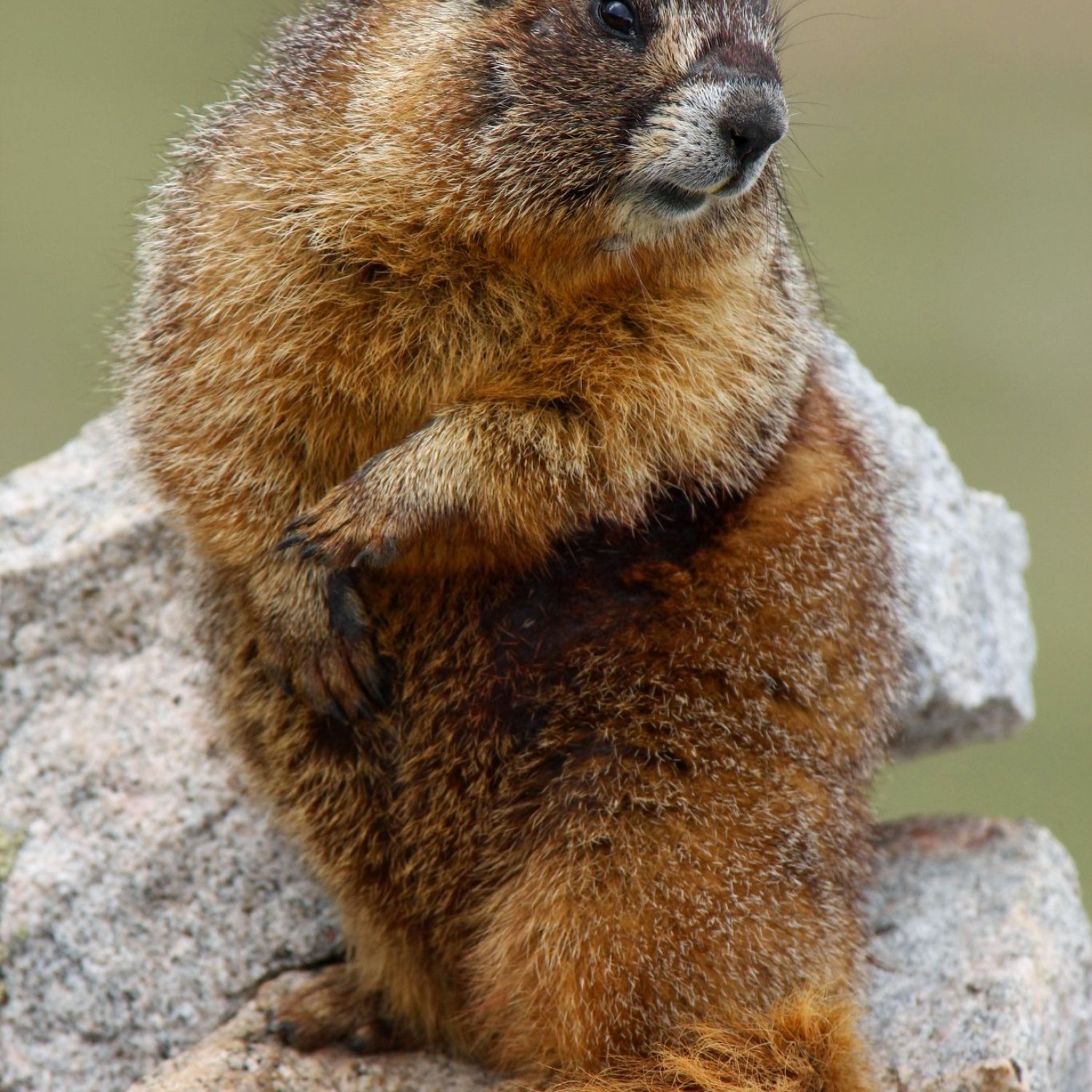
Marmot
16-28 inches
Marmots are adorable members of the Sciuridae family, known for their stocky, compact bodies. Found in the Rocky Mountains, Alps, and Himalayas, these creatures can grow up to 16-28 inches in length. With their cute appearance and diverse habitat, it's no wonder why marmots are a beloved species by nature lovers. #Marmots #RockyMountains #Alps #Himalayas #NatureLovers
Animal Details Summary:
Common Name: Marmot
Kingdom: Animalia
Habitat: Mountainous regions
The Adorable Marmot: A Fascinating Creature of the Mountains
The wilderness of the mountainous region is vast, and our planet is home to a diverse range of magnificent creatures that inhabit these harsh and rugged terrains. One of these remarkable creatures is the Marmot, a creature that has captivated the hearts of many with its adorable appearance and interesting behavior. With its stocky and compact body, brown or gray fur, and curious nature, the Marmot is a fascinating animal that deserves our attention. In this article, we will take a closer look at this charming creature and discover the unique features that make it a true wonder of the mountains Marmot.A Classification of Marmot
Before we delve into the details of this animal, let us first understand its classification. The Marmot belongs to the class Mammalia, making it a mammal. Its scientific name is Marmota and belongs to the family Sciuridae, which also includes chipmunks, prairie dogs, and squirrels. The name Marmot is derived from the French word "marmotte," which translates to "woodchuck." This name is quite fitting as Marmots are often found in mountainous regions, where they burrow in the ground to make their homes.Marmots are classified as rodents, belonging to the order Rodentia. These animals are known for their sharp front teeth that continuously grow and need to be worn down by gnawing on hard objects. With their stocky and compact body shape, Marmots have a similar appearance to other rodents like squirrels and chipmunks. However, they are much larger and sturdier than their tree-dwelling relatives Mockingbird.
A Habitat Fit for the Marmot
One of the fascinating aspects of the Marmot is its habitat and geographical distribution. These animals are primarily found in mountainous regions of North America and Eurasia, making them true mountain dwellers. In North America, they can be found in the Rocky Mountains, while in Eurasia, they are commonly seen in the Alps and Himalayas.Marmots are well adapted to living in harsh and rugged terrains with elevations up to 14,000 feet. They prefer open habitats with rocky outcrops and alpine meadows, where they can easily spot potential predators like eagles and coyotes. These creatures are known for their burrowing abilities and can often be found in burrows dug out of the side of a mountain.
A Herbivorous Diet for the Marmot
Marmots are primarily herbivores, meaning they only consume plant-based foods. Their diet consists of a variety of grasses, shrubs, and herbs that they can find in their mountainous habitat. These animals are important for the ecosystem as they help in controlling the growth of plants and allow for the growth of new vegetation.As hibernation is a crucial part of a Marmot's life, they spend most of their summer days foraging and storing food in their burrows. This food supply is crucial for them to survive the long, harsh winters when they hibernate.
The Surprising Coloration and Body Shape of Marmots
Marmots are well known for their stocky and compact body shape, which helps them navigate through the rugged terrain of the mountains. They have four short, but powerful legs with sharp claws that they use for digging burrows and climbing rocks. Their body length can range from 16 to 28 inches, with an additional 7 to 18 inches for their bushy tail.The fur of a Marmot can vary in color, with shades of brown and gray being the most common. However, some subspecies can have a more reddish or yellowish hue to their fur. This coloration helps them blend in with their surroundings, providing them with camouflage and protection from predators.
A Long Life in the Mountains
Marmots have an average lifespan of 10 to 15 years, which is relatively long for a rodent. However, their lifespan greatly depends on their habitat and the availability of food. In areas where food is scarce, Marmots may only live up to 6 years, while those living in a well-fed environment can live up to 18 years.The harsh winters in the mountains, along with potential predators, pose a significant threat to the Marmot's lifespan. However, these creatures have developed some unique adaptations that help them survive in their challenging habitat.
Marmot Adaptations: A Means of Survival
Marmots have several fascinating adaptations that allow them to thrive in their harsh mountain environment. These adaptations are crucial for their survival and help them navigate through the challenges they face in their habitat.The Art of Hibernation
One of the most notable adaptations of Marmots is their ability to hibernate for several months during the winter. As the temperatures drop, these animals find a safe place in their burrows and reduce their metabolism to conserve energy. They first fatten up during the summer months to store enough fat reserves to sustain them through the hibernation period.During hibernation, Marmots reduce their body temperature and heartbeat, making them appear "dead" to predators. This state of hibernation is essential for their survival, allowing them to conserve energy and survive the harsh winter months.
Communication through Whistling
Marmots have a complex communication system that involves a series of whistles. These whistles are used for different purposes, such as warning others of potential danger or attracting a mate. They have a unique communication call that is specific to their species, and they can even distinguish between the calls of different individuals.These whistling calls can be quite loud, making them heard up to a mile away. This ability to communicate effectively is essential for Marmots to protect their territory and maintain social cohesion.
The Marmot "Kiss"
Another interesting adaptation of Marmots is their "kissing" behavior. When two Marmots meet, they often stand on their hind legs, make soft squeaking noises, and touch their lips together. This "kiss" is believed to be a way of conveying information about their identity, status, and reproductive readiness.This kissing behavior is commonly seen between Marmot family members, as well as potential mates. It is an essential form of communication that helps maintain strong social bonds in a Marmot colony.
Protection against Extreme Temperatures
As the Marmot's habitat is known for extreme temperatures, these animals have developed several adaptations to protect themselves. Their thick fur provides insulation against the cold, while their sharp claws help them dig through snow and rocky terrain. They also have excellent spatial memory, allowing them to navigate through their rocky habitat with ease.Furthermore, Marmots have special heat vents in their ears, which allow them to regulate their body temperature and prevent heat from escaping. These adaptations make Marmots well adapted to the harsh and ever-changing climate of the mountains.
A Marmot's Place in Nature
Marmots play an essential role in the mountain ecosystem, with their existence crucial for maintaining the balance of nature. They are herbivores, and their constant foraging helps control the growth of plants, preventing them from becoming overgrown. This, in turn, allows for the growth of new vegetation, creating a diverse and healthy ecosystem.Furthermore, Marmots are a vital food source for predators like eagles, coyotes, and foxes. Their burrowing activities also help create shelter and homes for smaller animals, making them crucial contributors to the ecosystem.
The Marmot's Relationship with Humans
Marmots are mostly shy and avoid human interaction. However, in some areas, they have become accustomed to human presence and are not afraid to venture near populated areas. These curious creatures are often found around campgrounds and tourist areas, where they can easily find food scraps.In some cultures, Marmots are hunted for their fur and meat. However, in many countries, they are protected by law, and it is illegal to harm or hunt them.
In Conclusion
In this article, we have explored the fascinating world of Marmots, a creature that has captured the hearts of many with its cute appearance and interesting behavior. These animals may seem simple, but they are well adapted to survive in the harsh and rugged environment of the mountains. From their hibernation abilities to their complex communication system, Marmots are truly remarkable animals that deserve our admiration and protection.Their role in maintaining the balance of nature, along with their innate beauty and intriguing behavior, makes Marmots a valuable and cherished addition to our natural world. So, next time you see a Marmot in the mountains, take a moment to appreciate this wonderful creature and the unique qualities that make it one of the most charming inhabitants of the wild.

Marmot
Animal Details Marmot - Scientific Name: Marmota
- Category: Animals M
- Scientific Name: Marmota
- Common Name: Marmot
- Kingdom: Animalia
- Phylum: Chordata
- Class: Mammalia
- Order: Rodentia
- Family: Sciuridae
- Habitat: Mountainous regions
- Feeding Method: Herbivorous
- Geographical Distribution: North America, Eurasia
- Country of Origin: United States, Canada, European countries
- Location: Rocky Mountains, Alps, Himalayas
- Animal Coloration: Varies, usually brown or gray
- Body Shape: Stocky, compact
- Length: 16-28 inches
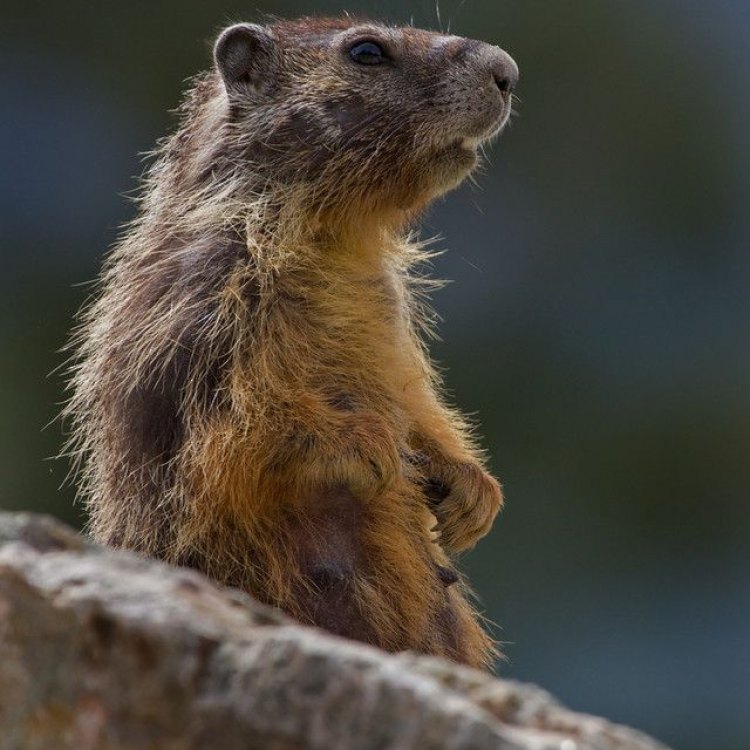
Marmot
- Adult Size: Medium to large
- Average Lifespan: 10-15 years
- Reproduction: Sexual
- Reproductive Behavior: Mating season in spring or early summer
- Sound or Call: Whistle-like warning call
- Migration Pattern: Non-migratory
- Social Groups: Social, live in colonies
- Behavior: Diurnal, active during the day
- Threats: Habitat loss, hunting, climate change
- Conservation Status: Least Concern
- Impact on Ecosystem: Important for ecosystem balance
- Human Use: Tourism, scientific research
- Distinctive Features: Large, robust body, short legs, short furry tail
- Interesting Facts: Hibernates during the winter, builds extensive burrow systems
- Predator: Golden eagles, wolves, bears
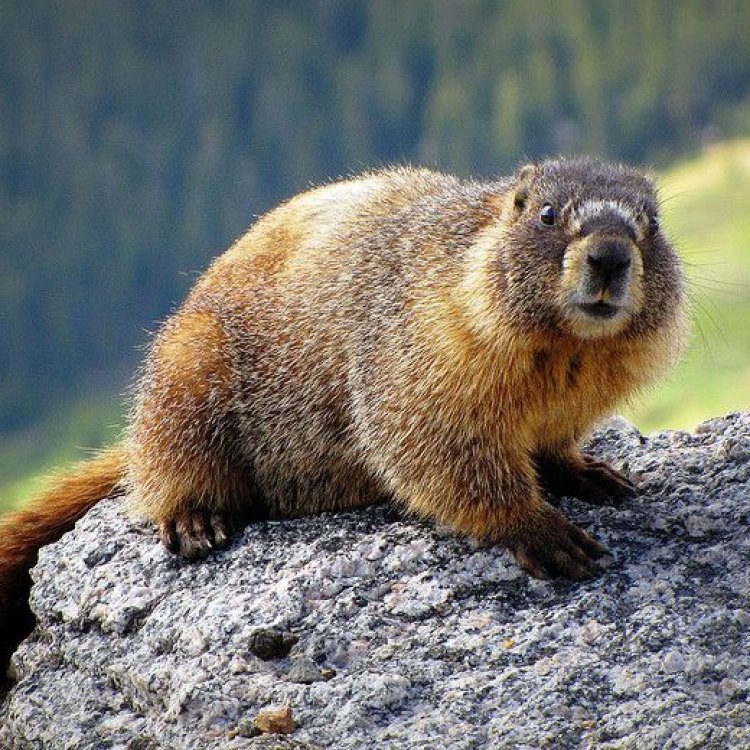
Marmota
The Fascinating World of Marmots: A Unique Species with a Vital Role in Nature
Have you ever heard of a marmot? If not, you're not alone. These intriguing creatures may not be as well-known as other animals, but they play a crucial role in our ecosystem. Marmots are medium to large-sized rodents that belong to the family Sciuridae, which also includes squirrels, chipmunks, and prairie dogs. Let's delve into the fascinating world of marmots and discover their unique features, behavior, and importance in nature PeaceOfAnimals.Com.Physical Characteristics and Behavior
Marmots are medium to large-sized rodents, with adults reaching a length of 60-70 cm and weighing between 2 to 8 kg. They have a large, robust body, short legs, and a short furry tail. Their fur can range from light to dark brown, and some species even have a mane of longer hair around their necks. Marmots are well-adapted to their alpine habitat, with strong claws for digging and sturdy bodies to survive in harsh weather conditions.These fascinating creatures are diurnal, meaning they are active during the day. They are social and live in colonies with up to 20 individuals, with one dominant male in charge of the group. They communicate with each other through various vocalizations, including a whistle-like warning call to alert others of potential danger. During mating season, which occurs in spring or early summer, males use a high-pitched, repetitive whistle to attract females.
Marmots are herbivores, and their diet consists mainly of grasses, plants, and flowers Muskrat. They are also known to occasionally eat insects, eggs, and even small mammals. To survive the harsh alpine winters, marmots hibernate for up to 8 months, during which their heart rate and breathing slow down significantly. They build extensive burrows with multiple entrances and use them as shelter and storage for food.
Reproduction and Lifespan
Like most mammals, marmots reproduce sexually and have a gestation period of about a month. The female gives birth to a litter of 2 to 6 pups, which are born blind and hairless. The pups will stay in the burrow with their mother for the first few weeks before emerging to explore their surroundings. Marmots reach sexual maturity at around two years of age, and their average lifespan is 10-15 years.The Vital Role of Marmots in Nature
Marmots may not be the first animal that comes to mind when thinking about critical species in our ecosystem, but they play a vital role in maintaining a healthy balance in nature. As herbivores, they help control plant growth, preventing overgrazing in their habitat. They also serve as an essential food source for their predators, such as golden eagles, wolves, and bears.Marmots also play a crucial role in shaping their environment through their burrowing activity. Their extensive burrow systems create habitat for other animals, like insects and small mammals. They also aerate the soil, bringing nutrients closer to the surface and promoting plant growth. In turn, this benefits other animals in the ecosystem, contributing to a healthy and diverse environment.
Threats to Marmots and Conservation Efforts
Unfortunately, marmots face several threats in their natural habitat. One of the biggest threats is habitat loss due to human activities, such as infrastructure development and agriculture. They are also hunted for their fur, and their burrows are often destroyed to prevent soil erosion. Climate change also poses a significant threat as it affects their food sources and overall habitat.Despite these challenges, the good news is that most marmot species are listed as Least Concern on the IUCN Red List of Threatened Species. This means their populations are stable, and conservation efforts are not a high priority. However, there are still localized threats to specific species, such as the Vancouver Island marmot, which is considered critically endangered.
Several conservation efforts are in place to protect marmots. One of the most successful programs is the captive breeding and release program for the Vancouver Island marmot. This program has successfully increased the wild population of this species from just 30 individuals in 2003 to over 200 in 2020.
The Human Use of Marmots
Marmots may be important for the ecosystem, but they also have a significant impact on human activities. They are a popular attraction for tourists in alpine regions, and many people go on hikes or take guided tours to see and learn about them. Marmots are also used in scientific research, primarily to study their behavior and genetics.Interesting Facts About Marmots
Apart from their vital role in nature, marmots have several interesting facts that make them stand out from other animals. For example, did you know that marmots hibernate during the winter and can lose up to half of their body weight during this period? Or that they are one of the few mammals that have a true hibernation, where their body temperature drops, and they enter a state of torpor?Another fascinating fact is that marmots are excellent swimmers and climbers, allowing them to navigate their alpine habitat with ease. They are also very vocal animals, using a wide range of calls to communicate with each other. And finally, marmots have a cousin known as the groundhog, which is also a type of marmot found in North America and is famous for predicting the weather on Groundhog Day.
In conclusion, marmots may not be the most well-known animal, but they are undoubtedly fascinating and vital to our ecosystem. From their physical characteristics and behavior to their essential role in nature, marmots have unique features that make them stand out. While they face challenges such as habitat loss and climate change, conservation efforts and public awareness can help protect them and ensure their continued contribution to our world. So, the next time you come across a marmot, take a moment to appreciate these incredible creatures and their role in maintaining the delicate balance of our planet's ecosystem.
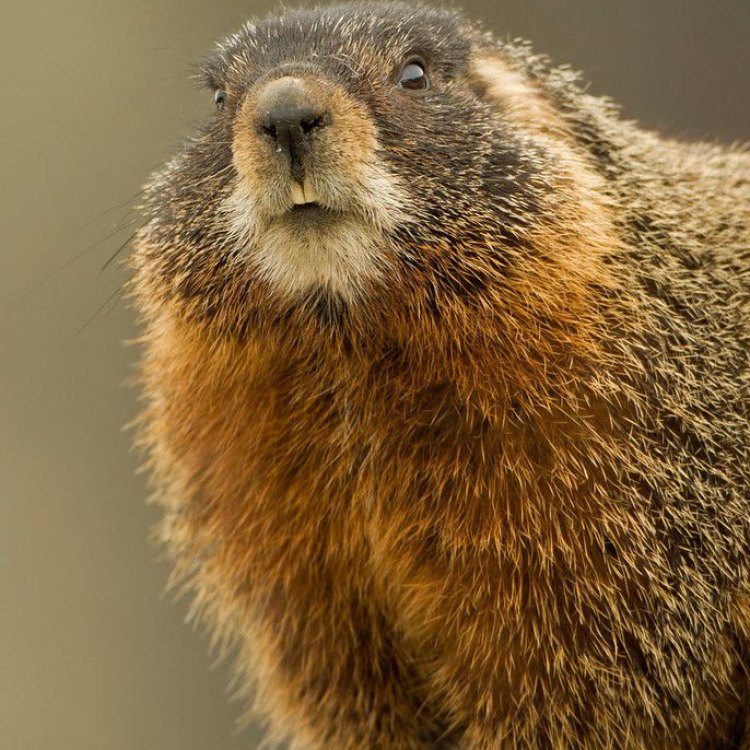
The Adorable Marmot: A Fascinating Creature of the Mountains
Disclaimer: The content provided is for informational purposes only. We cannot guarantee the accuracy of the information on this page 100%. All information provided here may change without prior notice.




